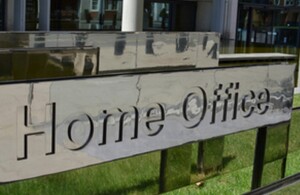Latest statistics on animal research published
The annual statistics on the use of animals in scientific research were published today by the Office for National Statistics. The Animals (Scientific Procedures) Division (ASPD) and Inspectorate (ASPI) have also published their joint annual report for 2009.

Statistics published today
Statistics of Scientific Procedures on Living Animals 2009, compiled from returns provided by 100 per cent of project licence holders, show:
- the number of licensed procedures started in 2009 fell slightly to just over 3.6 million scientific procedures, a fall of 37,000 (1%)
- the total, excluding breeding of genetically modified animals and harmful mutants, fell by 8% (180,000) to 2.1 million
- the increase in breeding procedures (+143,000 or 10%) is accounted for by mice (procedures using mice almost entirely for breeding or fundamental biological research)
- procedures using non-human primates fell 7% (-340) due to a fall for old world primates (-590 or -14%) and an increase for new world primates (+250 or 68%)
- dogs, cats, horses and non-human primates (types of animal which receive special protection under the 1986 Act), were used in less than 1% of the procedures
- the number of procedures using dogs fell 180 procedures (-3%); and the number of procedures using cats fell by 85 (-24%)
- non-toxicological procedures accounted for about 88 per cent of the procedures started in 2009 this contrasts with 75 per cent of procedures being for a non-toxicological purpose in 1995. Main areas of use include immunological studies, pharmaceutical research and development, cancer research, anatomy and physiology
- toxicology studies account for about 12% of the procedures, and are mainly undertaken to satisfy regulatory requirements (80%), with the testing of healthcare products accounting for most (78%) of these
Home Office minister’s statement
Home Office Minister Lynne Featherstone said:
‘The figures released today highlight the important work being done in regulating animal research and testing in this country.
‘This government is committed to continuing with the highest standards of animal protection. We are also committed to ending the testing of household products on animals and to working to reduce the use of animals in scientific research, and work is currently underway to see how this can be achieved whilst maintaining the UK’s position as a leader in scientific advancement.
‘The UK already has one of the most rigorous systems in the world to ensure that animal research and testing is strictly regulated. We ensure procedures are only carried out where completely necessary, and that suffering is kept to an absolute minimum.’
Annual report also published today
The Animals (Scientific Procedures) Division (ASPD) and Inspectorate (ASPI) have also published their joint Annual Report for 2009. The report provides a collective account of the activities of the Home Office staff who regulate this work.
During 2009 the combined efforts of the division and inspectorate:
- provided advice on 541 project licence applications, 2,645 personal licence applications, two applications for certificates to designate establishments for scientific work, and 6,224 requests for amendments to licences and certificates
- carried out 1,994 (mainly unannounced) visits to places where scientific work on animals was conducted
- spent 5,763 hours on site conducting inspections and advising on the use of animals in research
Background information
The Animals (Scientific Procedures) Act 1986 regulates the use of animals in scientific experiments and ensures their use is limited to only where there is a clear potential benefit to either people, animals or the environment; and when there is no means of obtaining these benefits without animal use, or at a lesser animal welfare cost.
The ASPD operates the licensing system on behalf of the Secretary of State and provides policy advice and support, whilst the statutory role of the ASPI is to advise on proposals for work under the Animals (Scientific Procedures) Act 1986 and to monitor compliance with authorities under that act.
All scientists and researchers undertaking animal research in the UK are required to take into account the ‘3Rs’ (measures to replace, reduce, and refine animal use) when devising their programmes of research proposals. Furthermore the Secretary of State may not authorise animal use when the scientific objectives can be met by means not using animals; and, when work is licensed, all reasonable steps must be taken to minimise the numbers of animals used and any suffering likely to be caused. The National Centre for the 3Rs provides a focal point and resources for such activities.
In November 2008 the European Commission published its proposal to revise Directive 86/609/EEC in order to strengthen and harmonise the regulation of the use of animals used in scientific experiments across Europe. The government continues to be actively involved in the ongoing negotiations on the revisions to the Directive.
Notes to editors
- Download and read Statistics of Scientific Procedures on Living Animals 2009
- More information on the National Centre for the Replacement, Refinement and Reduction of Animals in Research
- The Animals (Scientific Procedures) Inspectorate (ASPI) is part of the Home Office. ASPI Inspectors are employed as civil servants to provide technical advice to the Home Secretary and to the ASPD officials who operate the licensing system and provide policy advice to Ministers. They also maintain a programme of inspections of work carried out under the Animals (Scientific Procedures) Act 1986 and inspect the facilities where animals for this work are bred and used
- In November 2008 the European Commission published its proposal to replace Directive 86/609/EEC